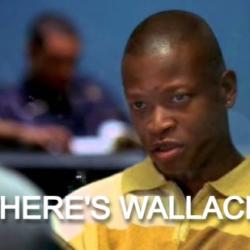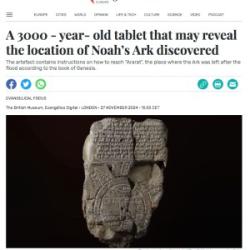I’m cautious about praising or drawing attention to the many Good Things I come across from within mainstream institutional American evangelicalism. Praise for such Good Things sometimes prompts a perverse response from gatekeepers, the donor class, and other institutional powers that be — particularly when that praise comes from the wrong people. And because of that perverse response, any expression of praise or commendation or gratitude can wind up having the effect of discouraging the very thing one is trying to encourage.
So there’s a tricky business here, trying to draw people’s attention to worthy things while avoiding the attention of the perverse powers that be. You can help a campfire catch by blowing on it, but you can also extinguish a candle by blowing it out. The impulse to shout an “Amen!” to a worthy message may wind up prompting the backlash that sees that message silenced and strangled and suppressed.
And it’s not just the message one needs to worry about. Incautious praise that rouses the perverse powers can also endanger the messengers. That means real people, their real lives and livelihoods may be at stake.
Let me give a couple of examples, case studies of this pattern and dynamic involving two institutional pillars of white evangelicalism in America: InterVarsity Christian Fellowship and Wheaton College.
Urbana 15 — InterVarsity’s massive missions conference — featured a remarkable, powerful, prophetic sermon from Michele Higgins followed by an enthusiastic “Amen” and altar call led by worship leader Erna Hackett. The response from the 16,000 white evangelicals in attendance at Urbana was overwhelmingly positive — bearing witness to their having experienced something true and Spirit-filled. I was cheered and encouraged to see that and I wanted to respond with cheers and encouragement for that, but before I was able to figure out how to do so, it was already too late.
The widespread praise and admiration and hopeful excitement generated by Higgins’ sermon and the audience’s receptive response had already triggered a vigorously reactionary reaction from TPTB and the backlash was already in full swing. As I wrote just a few days after Urbana 15, “InterVarsity takes a firehose to Pentecost in a rush to quench the spirit“:
Higgins’ prophetic words on that stage, for that audience, seemed to be, as Tobin Grant described it, “a watershed moment in American evangelicalism.”
I watched that sermon. Twice. Seeing such a “watershed moment” unfolding, I chided myself for being overly cynical.
But then I remembered the pattern. It never allows you to forget about it for long.
And it didn’t take long, at all, for the pattern to reappear and reassert itself. It didn’t take long for me to realize, yet again, that whenever I worry that I’m being overly cynical about white evangelicalism, I’m probably still not being cynical enough.
Michelle Higgins stood in the pulpit at Urbana and said that white evangelicalism was committing spiritual adultery with the false god of white supremacy. She called on white evangelical Christians to repent and be born again — to tear down that false idol and get busy where God is busy, in the movement for justice.
But that’s not what InterVarsity is now saying happened there at Urbana. If you go to InterVarsity’s website, you’ll see that the backpedaling, qualifying and retracting of this prophetic moment has already begun in earnest.
A Very Good Thing happened at Urbana 15 and, as soon as that Very Good Thing drew attention and praise, TPTB at InterVarsity rescinded and retracted and apologized for it, promising never to allow anything of the sort to ever happen again. (A promise that, happily, TPTB are not powerful enough to keep.)

I was kicking myself for not “remembering the pattern” in that post because of what had happened just prior to that at Wheaton College. A few weeks earlier I had written in praise of a fine statement produced and endorsed by students of that evangelical school who were criticizing the gun-toting, Muslim-hating Christian nationalism of Jerry Falwell Jr. — “Roll Thunder: Well done, Wheaton students.”
The donor class and other institutional Powers That Be at Wheaton were not at all pleased to see their students saying such things about an upstanding devout leader like Jerry Jr. If the students’ statement had only circulated on campus, TPTB might have found it sufficient merely to clamp down on the student paper or to threaten student government funding or some such other proportional response. But because the student statement got picked up in the press, becoming a minor national story that was earning cheers from all the wrong sorts of people, TPTB opted for a more severe form of backlash by making an example of a “tenured” faculty member. (Tenured is in ironic quotes there because, as it turns out, “tenure” protections do not actually apply to non-white, non-male faculty at Wheaton when TPTB are displeased.)
Ironically, the same folks who react with such perverse ferocity to any praise of white evangelical institutions from the wrong sorts of people will turn around and complain that those of us they consider the wrong sorts of people are “always critical” and “negative” about those institutions. They’ll get wind of a post like this one and chalk it up to “Oh, that guy is always bashing Wheaton and InterVarsity — he never has anything good to say about them.”
But all that shows is that we’ve tried to learn the lesson they’ve been emphatically teaching us. If we have something good to say about a sermon at Urbana, they respond with an apology for and a retraction of that sermon. If we have something good to say about Wheaton students, they respond by firing Dr. Hawkins for quoting Miroslav Volf. We’ve been taught that no good word will go unpunished, and that those punishments will be swift and severe. We’ve been taught never to praise any of the many Good Things that happen thanks to many of the good people at these institutions lest there be dire consequences for those very same good people. We’ve seen them shoot their hostages before and we know they’ll do it again if provoked.
I should be more specific about the identity of those “Powers That Be.” Who is it that Paul’s phrase describes here? The same three groups who have played this role in white evangelical institutions since before I was born. Not bell, book, and candle, but Bell, Pew, and Henry.
Here, again, is the tragedy of Frank Gaebelein at Selma, as summarized in Peter G. Heltzel’s Jesus and Justice:
In 1965 [Carl] Henry sent Frank E. Gaebelein to cover the march in Selma, Alabama. An associate editor of Christianity Today and the founder and headmaster of the Stony Brook School, New York, Gaebelein went to Selma and was so inspired that he wired Henry in Washington, DC, that [white] evangelicals needed to join the march. But Gaebelein’s stories of the Selma march never saw the light of day. The resistance at Christianity Today was coming primarily from two people: J. Howard Pew, the Texas oil man and the financer of Christianity Today, and L. Nelson Bell, Billy Graham’s father-in-law and an editorial adviser at Christianity Today, who still had segregationist views. Pew and Bell did not want Christianity Today to speak out too critically against racism and capitalism, because they thought it would alienate important segments of the magazine’s constituency.
Bell, Pew, and Henry. The segregationists, the Mammonists, and the administrators who capitulate to their desires. Always those three, working together to quench the Spirit and to put a halt to any tiny steps in the direction of justice. Today, as in 1965 or in 1865, these are the gatekeepers of white evangelicalism, TPTB who cast out and “controversialize” any voices they deem to be threats from within white evangelicalism and who work to silence even those voices outside of it with their hostage-taking. (“Meddle in our affairs by praising those we fear and we will make them jobless and homeless. They will be Ciziked and Hawkinsed and Throckmortoned into exile without severance and you meddling outsiders will be responsible for their fate!”)
Heltzel’s final sentence in the paragraph above doesn’t quite convey the whole truth about either the why or the how of Pew and Bell’s influence on Henry. He wrote: “Pew and Bell did not want Christianity Today to speak out too critically against racism and capitalism, because they thought it would alienate important segments of the magazine’s constituency.” But this wasn’t merely a prediction. It was a threat.
The racist and the Mammonist were guaranteeing that any support for the Civil Rights Movement “would alienate important segments of the magazine’s constituency” because they would actively promote and generate that alienation. They were informing Henry that they would use all of their influence and money to turn his constituency against him. He would be deluged with angry letters from former supporters and with cancellations of subscriptions by pastors who would denounce CT to their flocks and anathematize it in their congregations.
This is the same threat that the 21st-century Bells and Pews make against the administrators they’ve conditionally and provisionally allowed to run white evangelical institutions today. If a college administrator “allows” the students of that college to criticize a Club Member like Jerry Jr., or if some professor unnerves them by demonstrating solidarity with oppressed groups, then they warn that administrator that this might “alienate important segments of the institution’s constituency.” Meaning, in other words, that they would employ all their resources to generate fear, disgust, angry letters and revocations of support from every potential donor or the parents of every prospective student that they were capable of turning against the institution. Meaning, in other words, “Nice college you’ve got here. It’d be a shame if something happened to it.”
This form of raw power — the networks of media and direct-mail Scary Story fundraising outfits also controlled by these same Bells and Pews — enables them to threaten and exert control over even those white evangelical institutions they do not directly support with their imprimaturs and large donations. It’s not just the threat of withholding their direct support, but also the threat of directing attacks.
All of which is why I can enthusiastically recommend that video I posted yesterday because it includes the wisdom and insights of Dr. Korie Edwards from Ohio State and of Dr. Robert Chao Romero from UCLA.
And it’s why I’ll also whisper, quietly, that the other three panelists, brilliant folks who don’t work for big state universities, are also very much worth listening to here. They’re incisive, righteous voices with urgently important good news, and their work is a great credit to their respective institutions. But I’ll refrain from mentioning them by name and from naming those institutions, just in case Bell and Pew and Henry are listening.
P.S. I used to post pictures of the 19th-century abolitionist Jonathan Blanchard to accompany discussions of Wheaton College as a reminder of that school’s radical roots and its social justice warrior founder. At some point I switched to using pictures of his namesake — actor Orlando Jonathan Blanchard Bloom — because, well, he’s just so much prettier. And yes, that’s really his name because his family were the kind of people who named their children after 19th-century abolitionists and 16th-century composers, which is pretty cool.
P.P.S. I made it all the way through this discussion of the vindictiveness of white evangelical gatekeepers without ever once making any sardonic comments about how these same vindictive jerks are now pretending to be horrified by the bogeyman of “cancel culture.” I think my restraint there is commendable.












